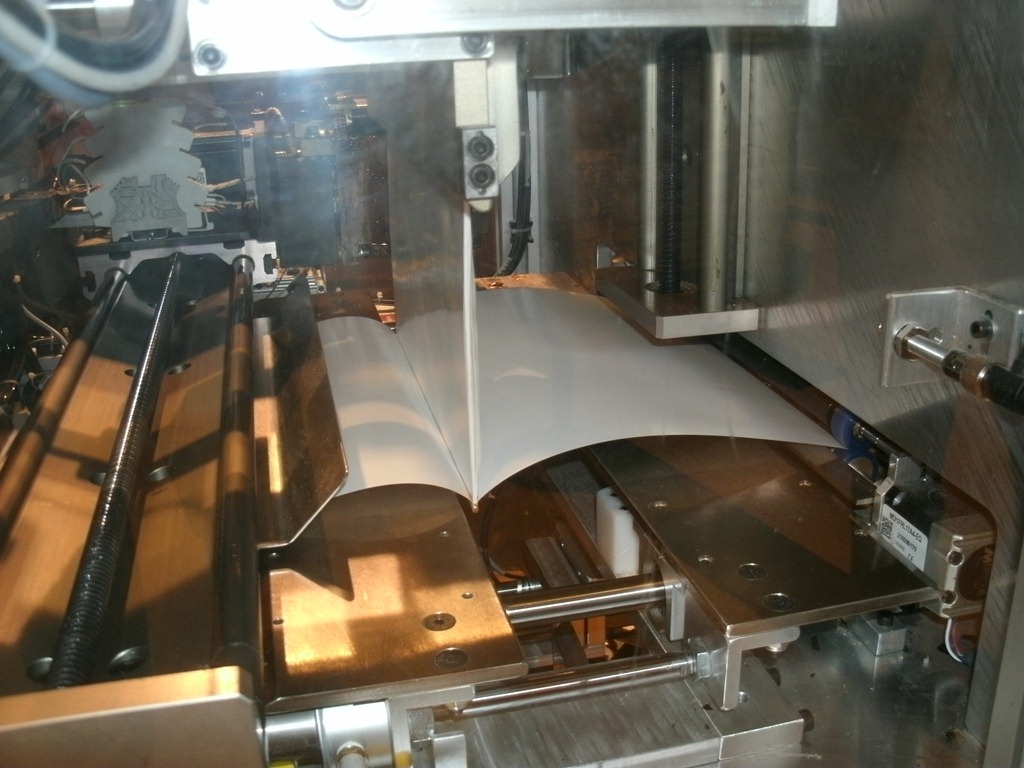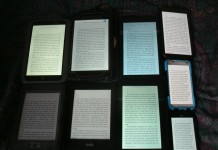 Speaking of the Espresso, a digital publisher’s paen to self-publishing through it led me to a blog post from last year in which librarian Rick Anderson of the University of Utah’s Marriott Library discussed the Espresso’s pros and cons in a bit greater depth than I’ve seen other posts go into.
Speaking of the Espresso, a digital publisher’s paen to self-publishing through it led me to a blog post from last year in which librarian Rick Anderson of the University of Utah’s Marriott Library discussed the Espresso’s pros and cons in a bit greater depth than I’ve seen other posts go into.
The problems Anderson found mainly have to do with a few technical glitches in the device itself, particularly due to the desert climate of his library being drier than the Espresso was originally designed for. Also, the device has a 45-minute-to-1-hour warmup time due to the glue needing to melt before books can be printed. He also points to the lack of recent titles and inadequacy of EspressNet’s search engine and the metadata assigned to the books in the EspressNet 3,000,000-title database.
On the other hand, Anderson notes that the machine has provided a lot of unexpected opportunities, such as finding and printing an obscure 300-year-old German text for a faculty member who had been trying to find a printed copy of it for years. Although there has been some excitement about the ability to find and print formerly virtually-inaccessible books, Anderson discusses being surprised by a demand for blank-page journals bound by the Espresso, and also great demand for Espresso self-publishing services. “The lesson we’ve learned here is that just as expected opportunities may fail to materialize, unexpected ones will almost surely crop up if you’re watching for them.”
In the comments below the article, Anderson offers some clarification on the machine’s abilities, and why he describes the Espresso as “sexy”:
What I find sexy is the capability (not yet fully realized) of the EBM to make an almost limitless fund of intellectual content immediately findable and then printable in the amounts needed and in the very moment needed by my library’s patrons — who, let’s remember, have historically been dependent upon my library staff’s ability to guess ahead of time what they are going to want and buy it fast before it goes out of print.
He also discusses the way it can provide more choices to students who might prefer to pay $20 for an EBM-bound paperback textbook rather than a $200 super-sturdy edition.
I don’t think I’ve ever seen a discussion of the Espresso’s drawbacks as well as benefits in such detail before. It was very interesting to read about some of the technical problems the machines have encountered (such as how On Demand Books had to send a technician out to Brigham Young University to saw a hole in the Espresso’s cover and install an ionizing fan to combat static electricity). But even with those drawbacks, Anderson was overall extremely pleased with how the machine had worked out so far.
I’ve already recorded my own impressions of seeing the Espresso in person. I think it’s a terrific device, but find it a little frustrating that there are currently only 57 of them extant in the entire world. You would think that more libraries and bookstores would be interested in adding this kind of flexibility in print to their facilities. Oh well, maybe in a few years…

































For every Espresso there are hundreds of thousands of high-speed, networked printers. Students are especially likely to use printers, on average 14 pages for every hour on-line. End user copying is not counted as print circulation, but it is.